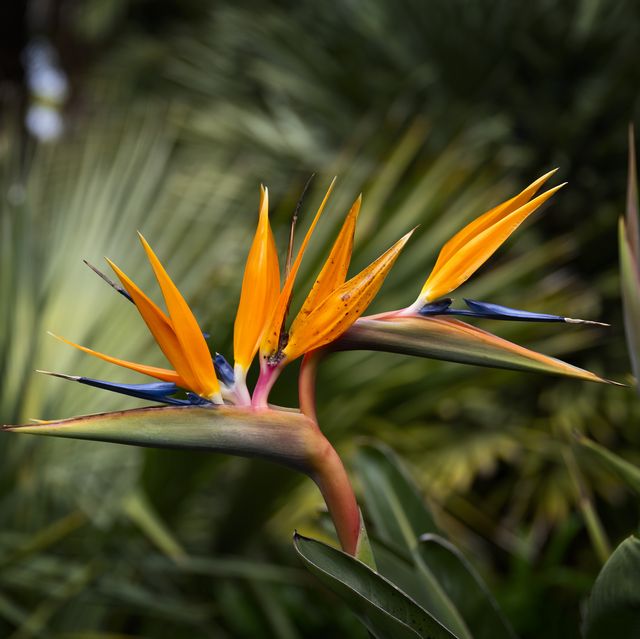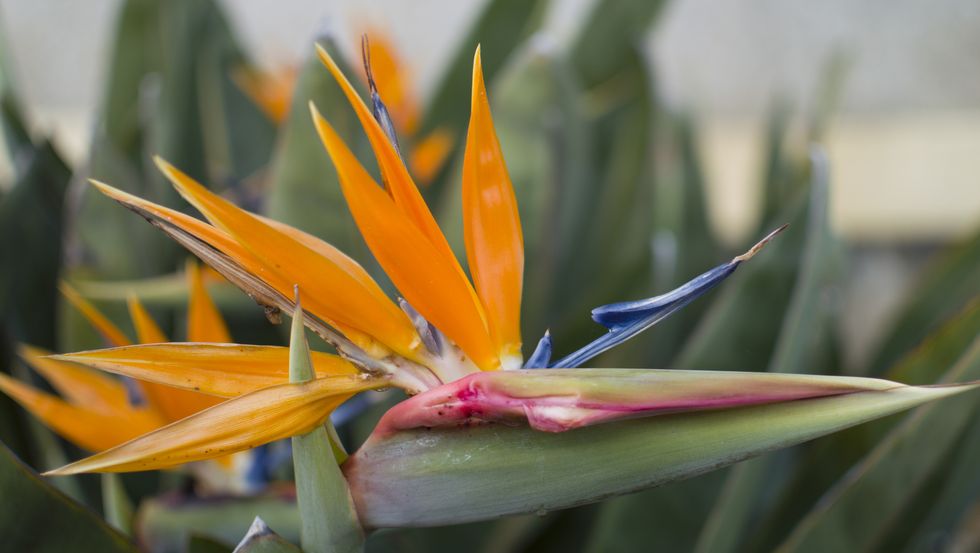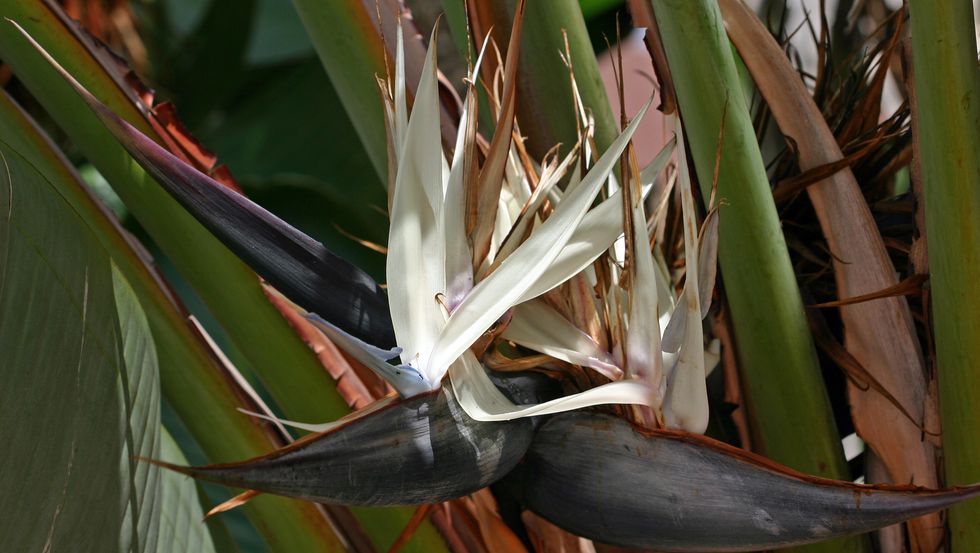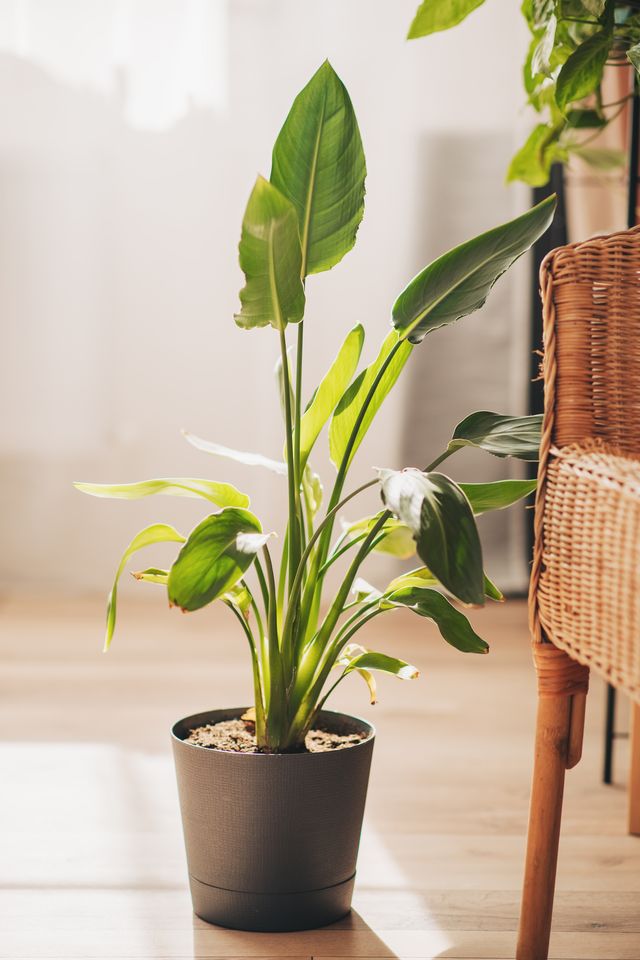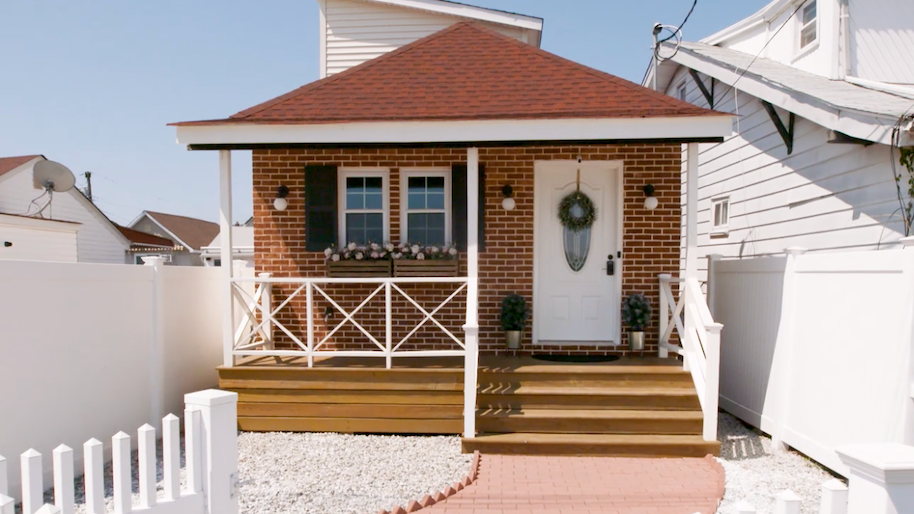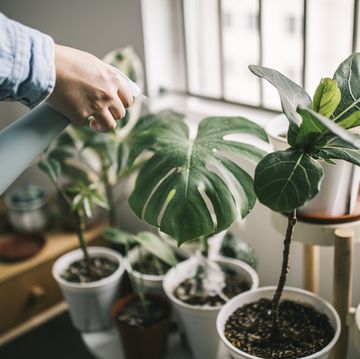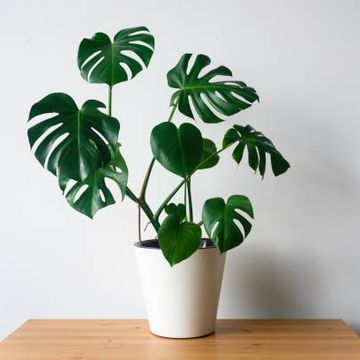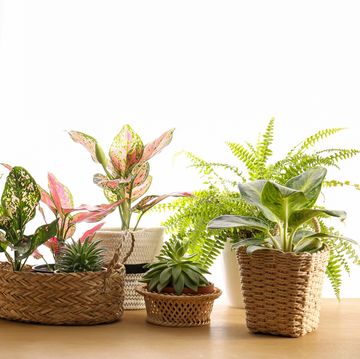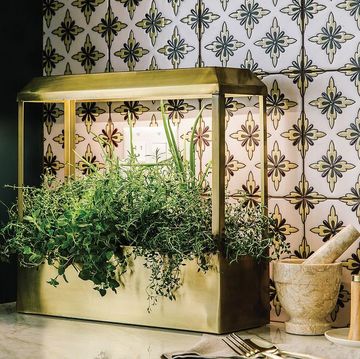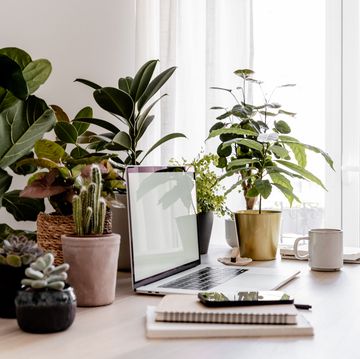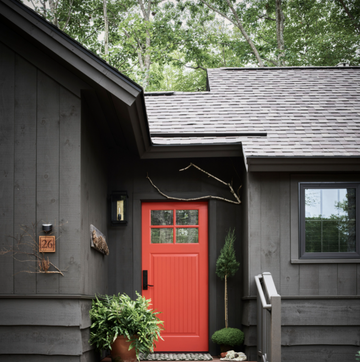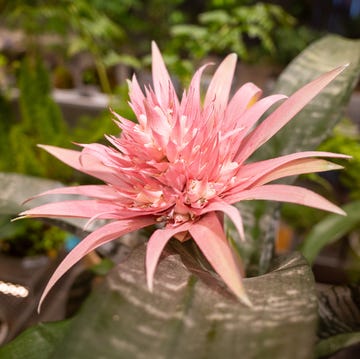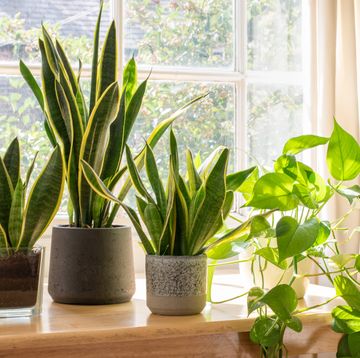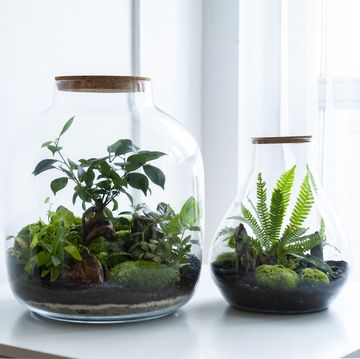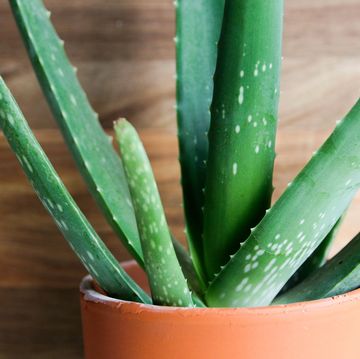With its origami-esque tropical flowers and striking colors, a bird-of-paradise plant brings a tropical flair to any home or garden. Named for their similar appearance to a bird taking flight, these plants come in a variety of hues from sunset orange and purple to a bright white. And while they may look like the kind of high-maintenance houseplant that requires special treatment, bird-of-paradise plants are surprisingly easy to care for. Whether planted outdoors or in, plant expert Allison Futeral, owner of Crimson Horticultural Rarities in Oakland, California, loves that they're adaptable and can thrive in nearly any environment, as long as it's not a desert.
Strelitzia, the scientific genus for the bird-of-paradise, is a perennial blooming plant native to tropical and subtropical regions of Southeast Africa. That said, it's been cultivated all over the world. If you're in the market for a showstopping addition to your plant collection, look no further. Ahead, we break down everything you need to know about the bird-of-paradise plant and share Futeral's expert growing advice. From the different color varieties to the precise plant care routine you need to follow, read on to learn how to keep your bird-of-paradise plant thriving.
Types of Bird-of-Paradise Plants
There are five subspecies of bird-of-paradise plants, according to the University of Wisconsin at Madison Horticulture Division of Extension (UWI): S. reginae, S. juncea, S. nicolai, S. caudata, and S. alba. While the first one is the most common (and easiest to grow), all five are known for their signature flowers.
S. reginae (Mandela's Gold)
This type of bird-of-paradise has wide, paddle-shaped leaves and produces bright yellow blooms with blue accents. It's the one most people picture when they think of a bird-of-paradise plant.
S. juncea
This type grows lower to the ground and has much narrower, spear-like leaves than those of S. reginae, according to UWI. Its flowers are similar but slightly smaller too. It's very rare to find for home-growing purposes.
S. alba and S. nicolai (White Bird-of-Paradise)
Also known as giant bird-of-paradise plants, these larger types look more like trees and can reach up to 30 feet tall when grown in USDA Plant Hardiness Zones 9B through 11, according to the University of Florida Gardening Solutions program, which recommends growing these varieties only if you have the space to dedicate to it. Like other tropical plants, this one prefers full sun to light shade and moist yet well-draining soil.
S. caudata
Much rarer (as in hardly-ever-available rare), this variety is similar to the white or giant bird-of-paradise except it can grow up to only around six feet tall.
Where to Plant a Bird-of-Paradise Plant
If you live in USDA plant hardiness zones 10 and 11, your bird-of-paradise plant will thrive outdoors. However, in hotter climates like in southern Florida, Texas, and parts of Louisiana, it may actually be too hot for this tropical plant; it can scald in the heat and not flower. Just be wary of parts of your lawn that are prone to flooding or standing water, since excess moisture isn't good for the roots.
Bird-of-paradise plants can do perfectly well indoors when the outdoor conditions aren't ideal. They grow tall—upward of five feet in some cases—and their leaves love to spread out, so just be sure your plant has plenty of room.
When and How to Plant Birds-of-Paradise Outdoors
Because the indoor environment is so consistent (i.e., no overnight freezes or heat waves), it doesn't matter when you bring a bird-of-paradise home. Outdoors, however, you'll want to follow the plant's growing season for the best chance of success. BBC's Gardener's World suggests planting in late March or early April, once the final frost has happened. Just as you would indoors, keep the soil moist and feed with a fertilizer every once in a while into the prime summer months.
Bird-of-paradise plants do well when they're rootbound, according to UWI: "These plants tend to bloom more profusely when pot-bound, so don't be too anxious to repot your plant…just replace the topsoil every year or so." Because of this, outdoor planters, pots, or raised beds with walls might be best to give the plants' roots a bit of structure rather than an open gardening plot.
How to Care for a Bird-of-Paradise Plant
Bird-of-paradise plants are surprisingly hardy and versatile. Follow these growing tips for a thriving plant with plenty of its namesake blooms.
Sunlight
"A bird-of-paradise is a relatively hardy plant and will adapt to most lighting conditions," Futeral says. "While they will acclimate to low indirect light, they will flourish in a nice sunny spot." We recommend putting your plant near an east- or north-facing window where it can soak up the rays.
Water
"It is important to be consistent with water and humidity," Futeral explains. "Water her enough to keep her evenly moist—like a wrung-out sponge—but not soggy." Between waterings, it's important to let your bird-of-paradise plant dry out completely. You can check this by sticking a finger about an inch into the soil to check for moisture. If any soil sticks to your finger, the soil is still moist and doesn't need more water yet.
Outdoors, a new bird-of-paradise plant needs frequent irrigation for the first six months to get established and stay healthy, according to the University of Florida's Gardening Solutions program. "Your newly planted bird-of-paradise will need frequent rainfall or irrigation for six months to aid with establishment," it explains. "Once established, frequent watering is only needed during the warm growing season. Irrigation is only necessary in the winter if the soil is dry."
Soil and Fertilizer
The ideal soil for a bird-of-paradise plant is well-draining. You can add fertilizer sparingly during the winter months to help promote growth. During the growing season, fertilize the soil every three to four months to help promote blooming.
Temperature and Humidity
Due to their tropical nature, bird-of-paradise plants like to be warm but not hot; think pretty much room temperature, or between 65 and 75 degrees, according to Futeral. If you notice your plant's leaves getting crispy or drooping even though you just watered it, it probably needs a burst of humidity and a day of shade to recover. Futeral recommends giving your plant a good misting every few days. "You can create more humidity with a humidifier or a tray of pebbles if you feel so inclined," she says. "The humidity will help keep the leaves intact and make for less split leaves. Lastly, rotating your plant every few weeks is helpful to maintain a nice and even growth pattern."
Common Problems with Bird-of-Paradise
Pests
A bird-of-paradise planted outdoors will have more pest problems than one grown indoors, but pests are totally manageable with the right maintenance, and the University of Florida's Gardening Solutions reassures us that major pest problems are increasingly rare. For good pest prevention, we recommend spraying neem oil on your plants once a month to deter pests whether they're indoors or out. Luckily, deer and rabbits don't like bird-of-paradise plants, so you won't have to worry about them snacking on your outdoor varieties.
Brown or Curling Leaves
Leaves that are brown, crispy, or curling are a common sign of underwatering or sun scorching. Your bird-of-paradise just needs more moisture! Give it an additional watering and consider adding a humidifier or surrounding it with more plants to up the humidity. If your plant is sitting directly in the sun, move it elsewhere for a few days to allow it to recover. Remember: Too much direct sun isn't great for this adaptable, yet sensitive, plant.
Slits in Leaves
According to plant retailer Bloomscape, slits or holes in your bird-of-paradise plant's leaves are totally normal: "These slits occur naturally in the wild to help the plant become more aerodynamic in wind and rain," it says. Bird-of-paradise plants evolved to withstand tropical storms, so don't fret if your plant develops a few spare spots.
Propagating
According to the University of Florida Gardening Solutions program, propagating a bird-of-paradise plant is pretty easy. Follow their steps below for double the bird-of-paradise fun.
Step One: Dig up and separate mature clumps in the late spring or early summer.
Step Two: Pull them apart into single stems, and then replant the stems at the same depth as they were before.
Step Three: Irrigate the divisions to keep the soil moist for three months (until roots are established), and then begin fertilizing. In a year or two you will enjoy mature, flowering plants.
Companion Planting for Birds-of-Paradise
While Futeral says planting another variety in the same pot is never a good idea, she recommends pairing a bird-of-paradise with plants of a similar nature and care routine. "Indoors, they need a good amount of room, but you could plant something next to it," she says. "A banana tree would look great and has a similar care structure with light and water requirements." Outdoors, we recommend surrounding it with low-to-the-ground plants to really let the bird-of-paradise's height shine. Additionally, choose those in complementary or more neutral colors so as not to distract from the plant's spectacular blooms.
Frequently Asked Questions
If you have an issue with your bird-of-paradise plant, read on. We found answers to the most common concerns.
Are Birds-of-Paradise Toxic?
Yes, Birds-of-paradise (yes, that's the plural form) are toxic to cats, dogs, and horses. Their stiff, upright leaves aren't the most enticing to nibble on, but if you have a curious pet, be aware that bird-of-paradise plants can be harmful if ingested.
How Long Do Bird-of-Paradise Plants Live?
Decades. Bird-of-paradise plants are known for living for more than 50 years with the proper care and in the right growing conditions.
Do Homegrown Bird-of-Paradise Plants Produce Flowers?
Yes, bird-of-paradise plants can produce their namesake spiky blooms outside the tropics. However, they do need consistency in terms of both sunlight and water to flower. Plus, they need to reach maturity before they'll flower regularly. That means five or six years old for a new plant.
Why Isn't My Bird-of-Paradise Blooming?
The most common causes of a bird-of-paradise plant not flowering are too much shade and irregular watering. It's also important to remember that if you're growing a bird-of-paradise from seed or working with a fairly young plant, it won't flower until it reaches maturity at five or six years old on average.
